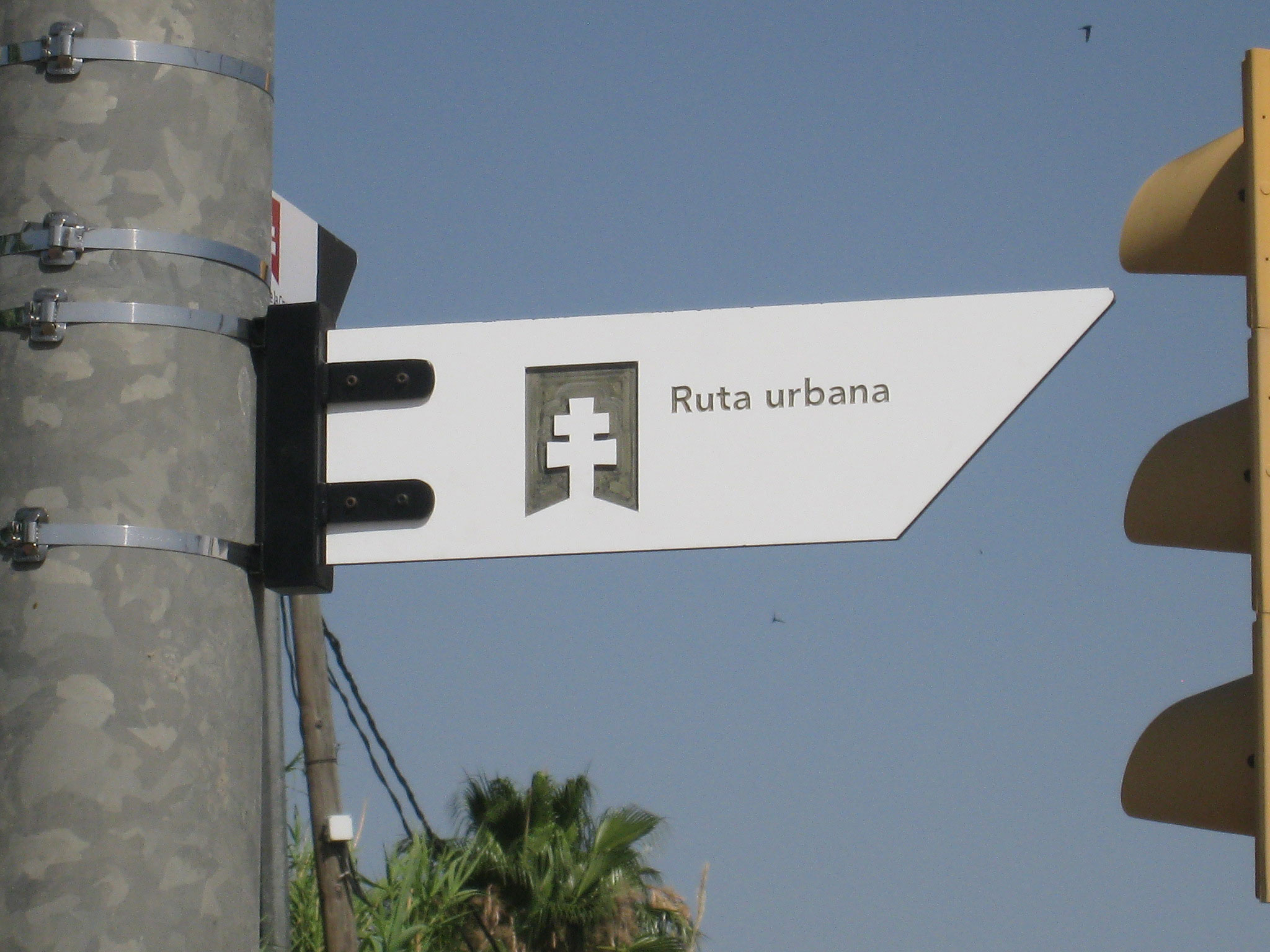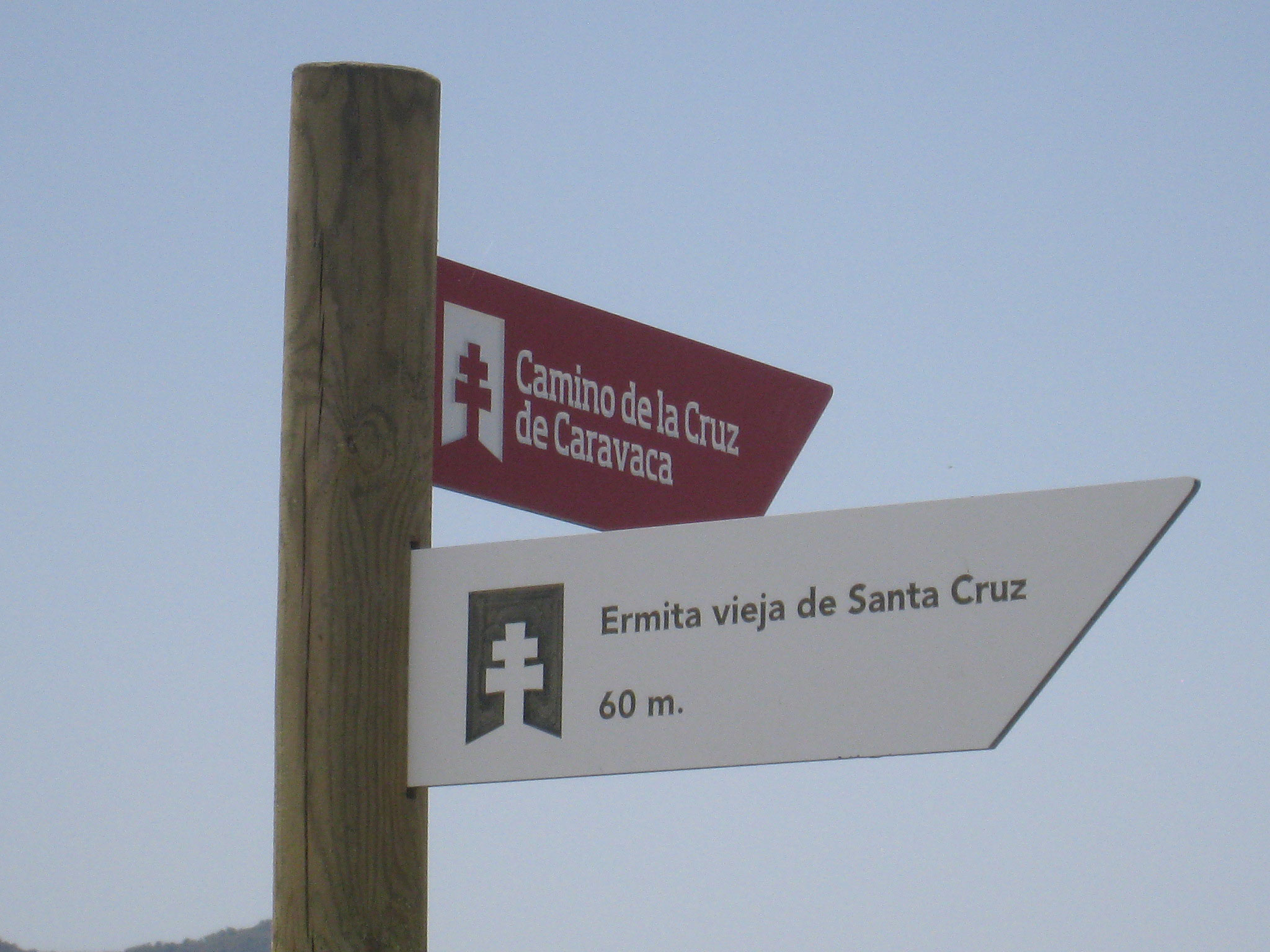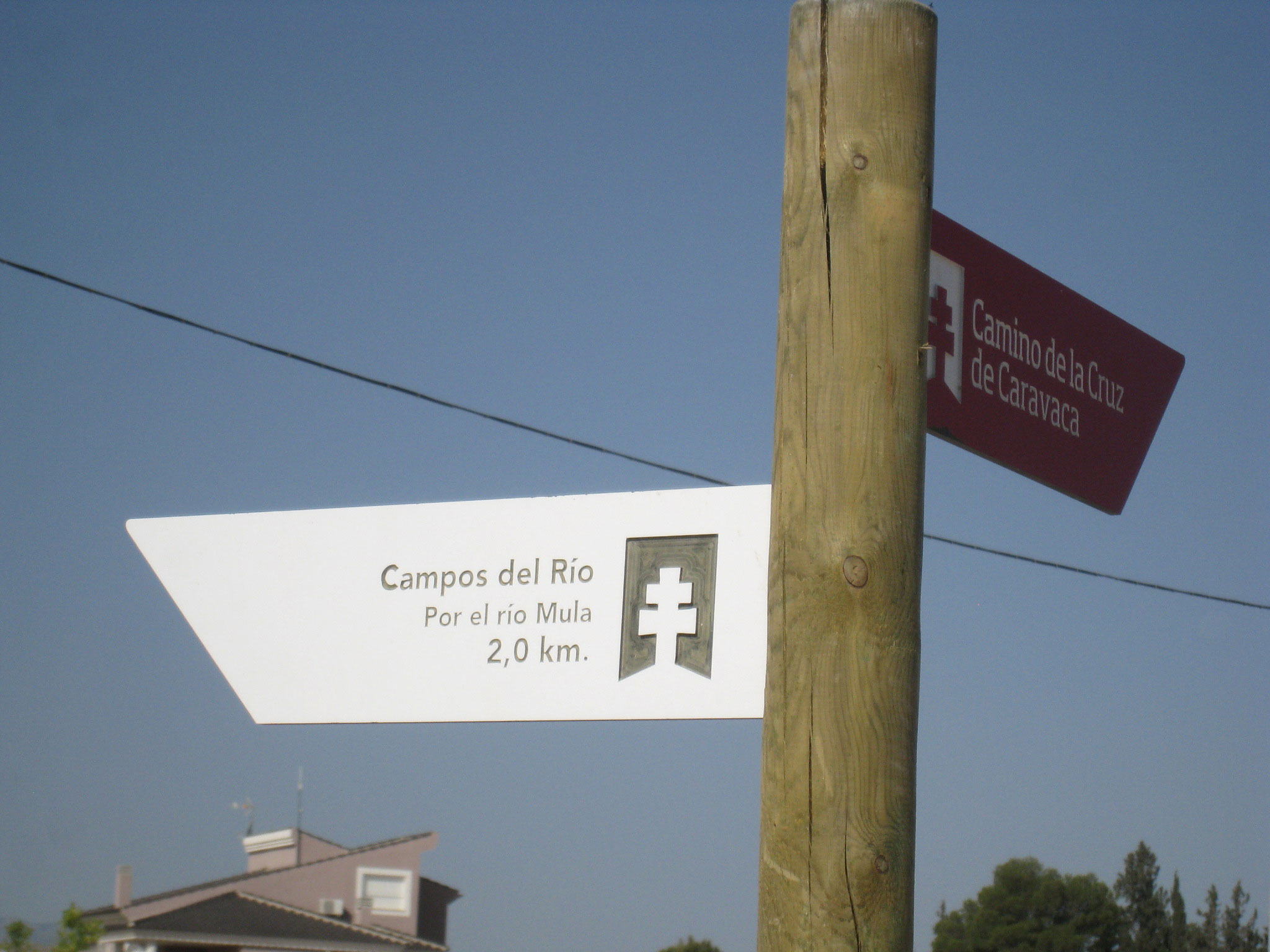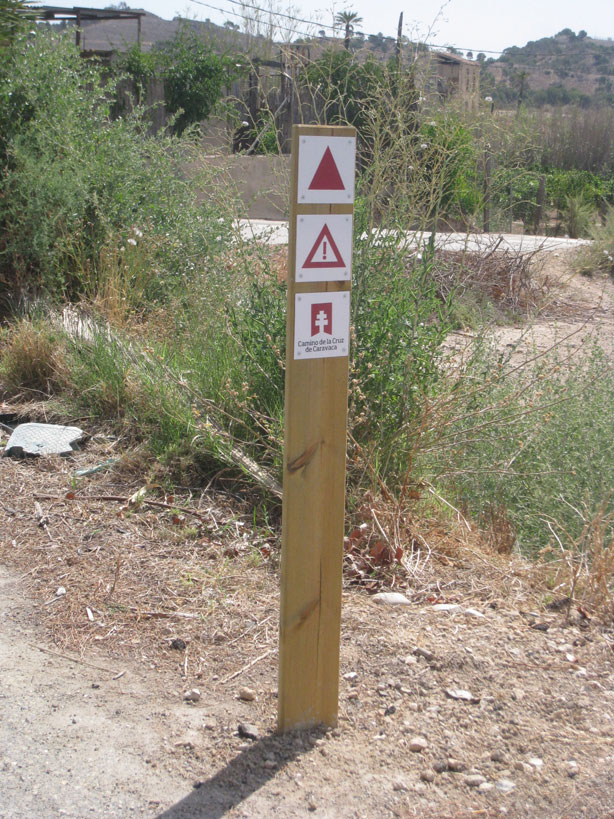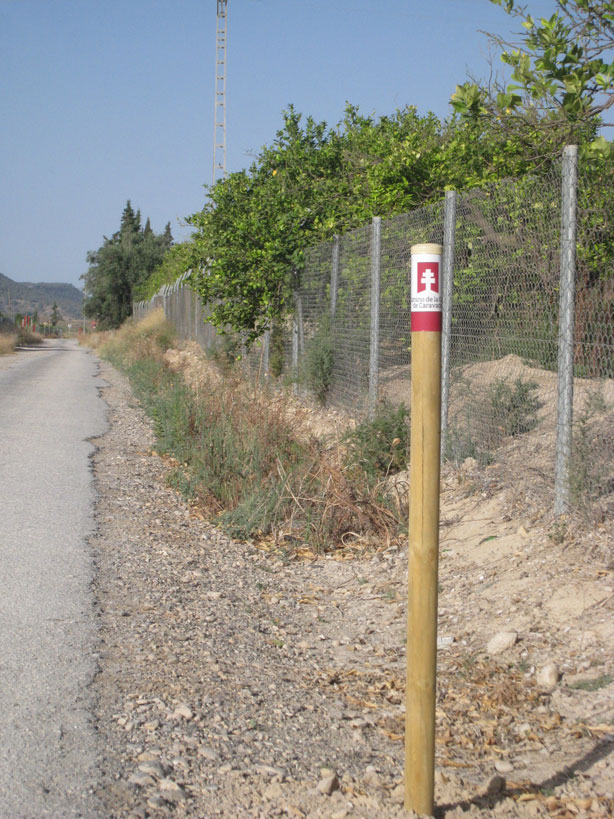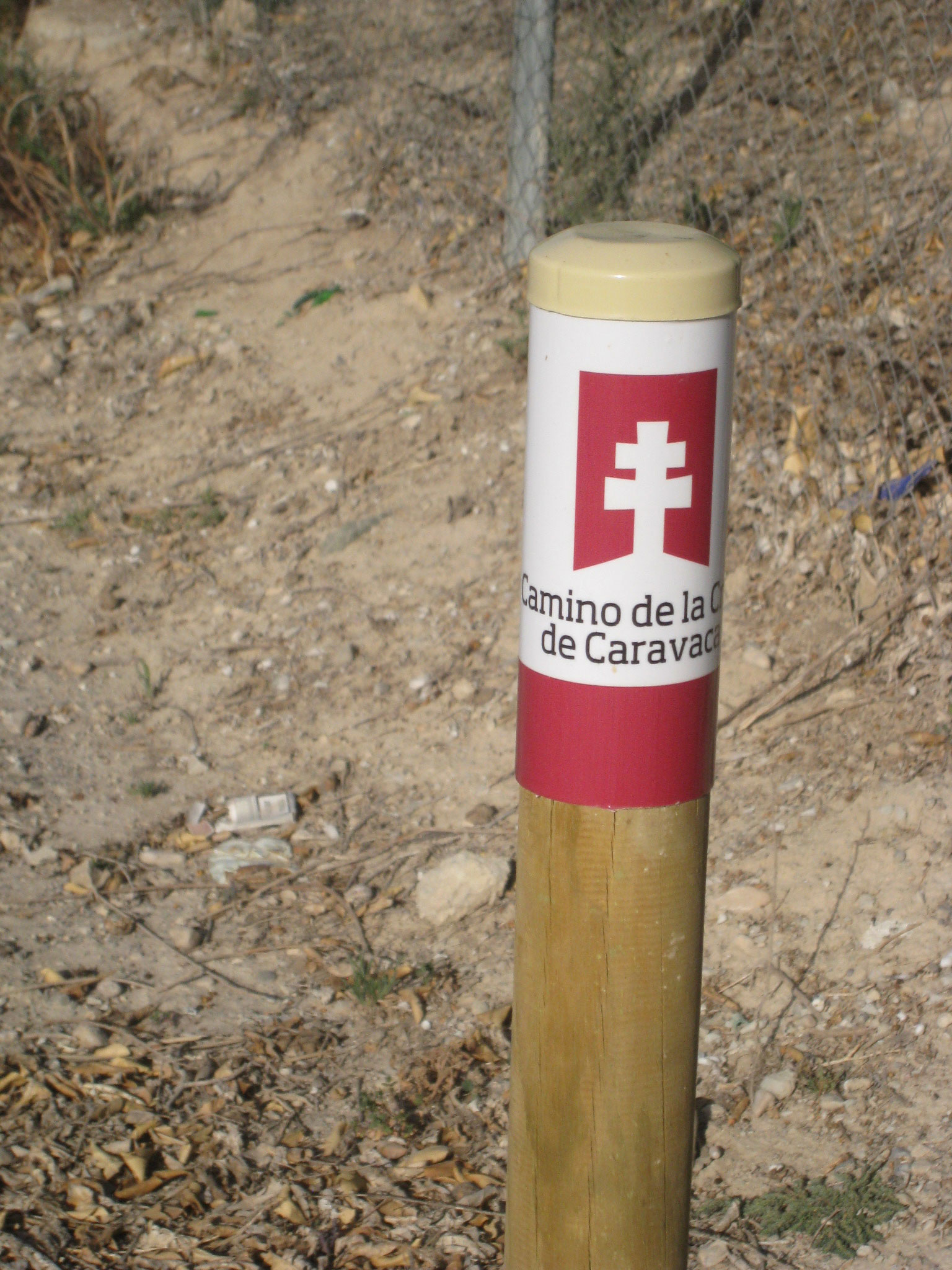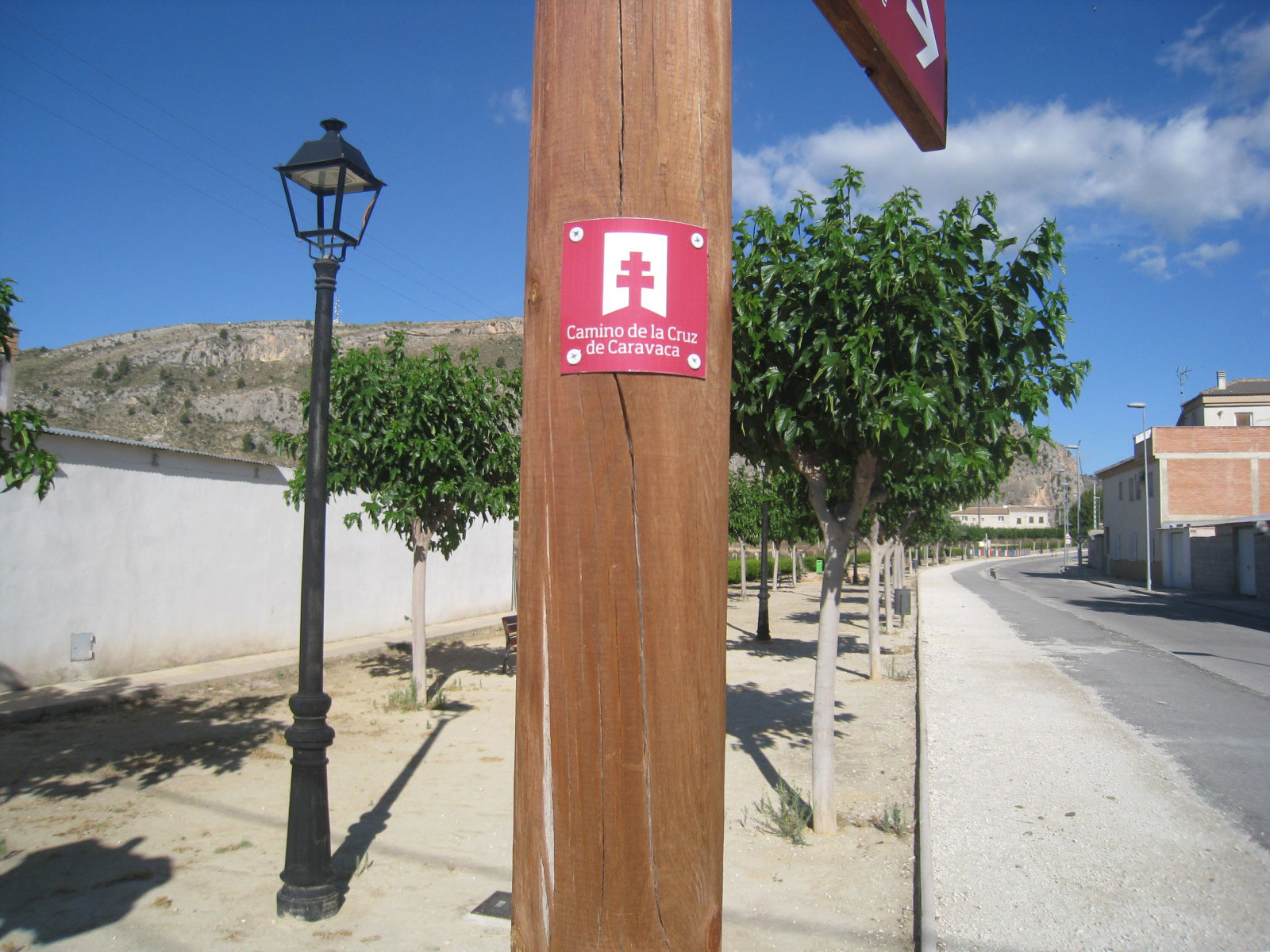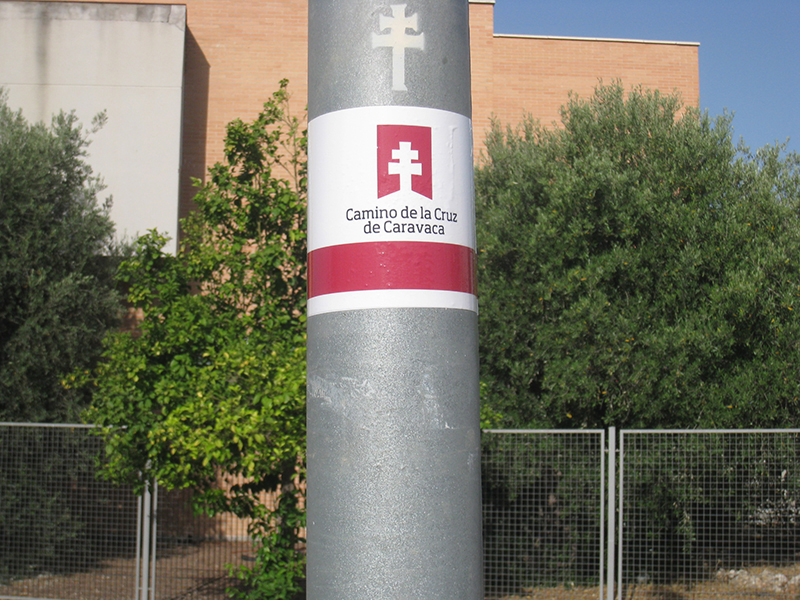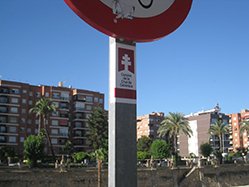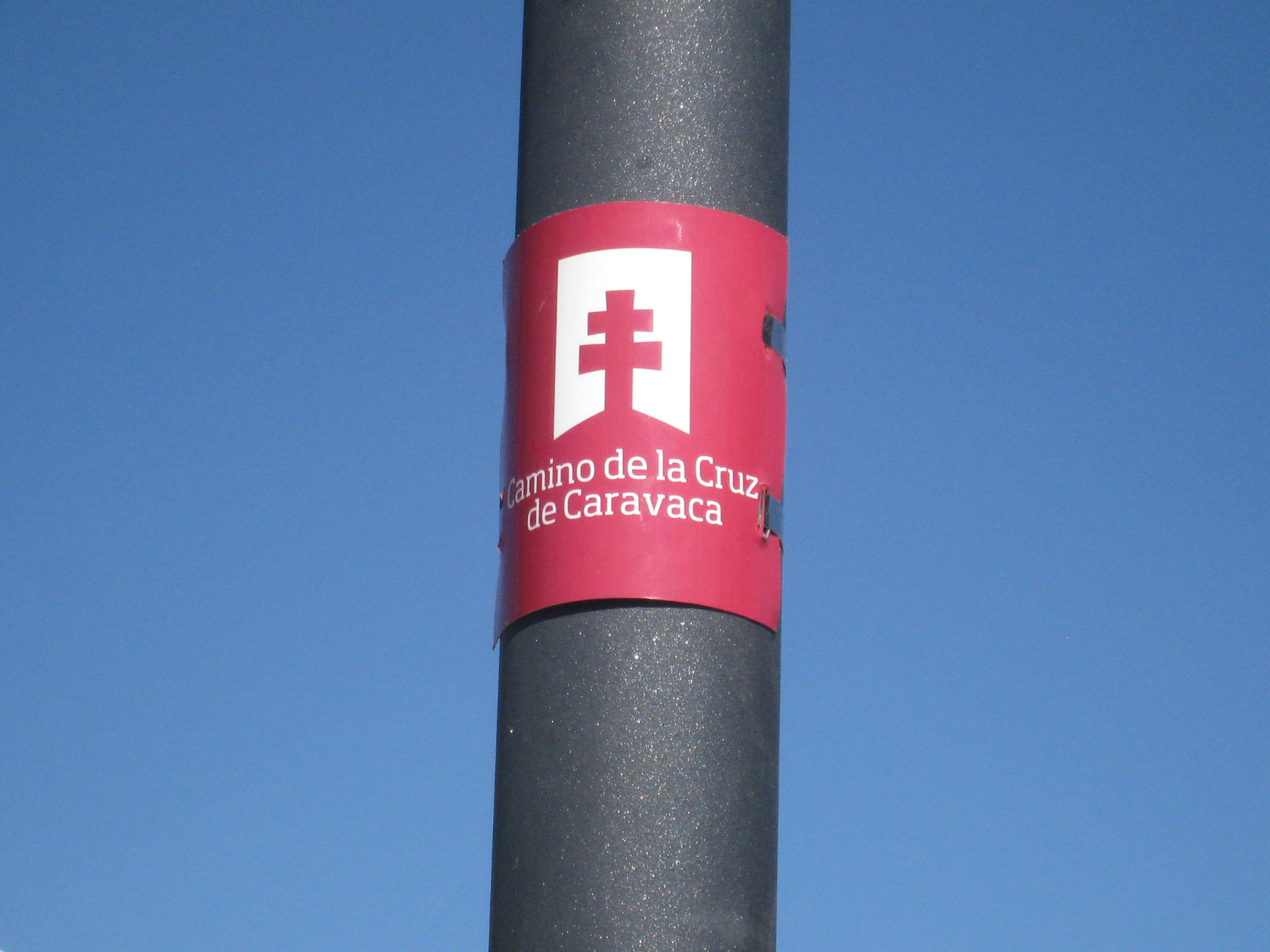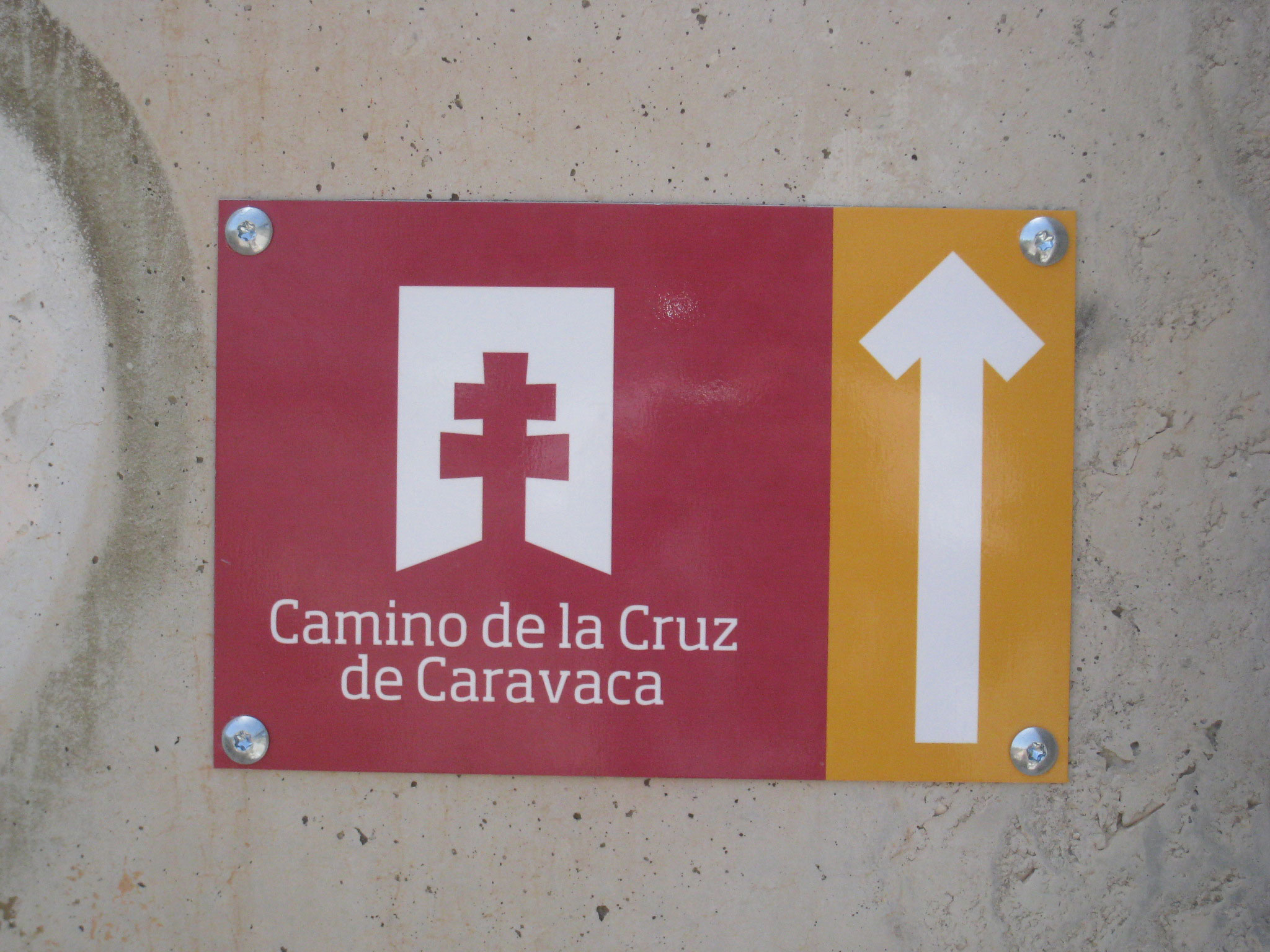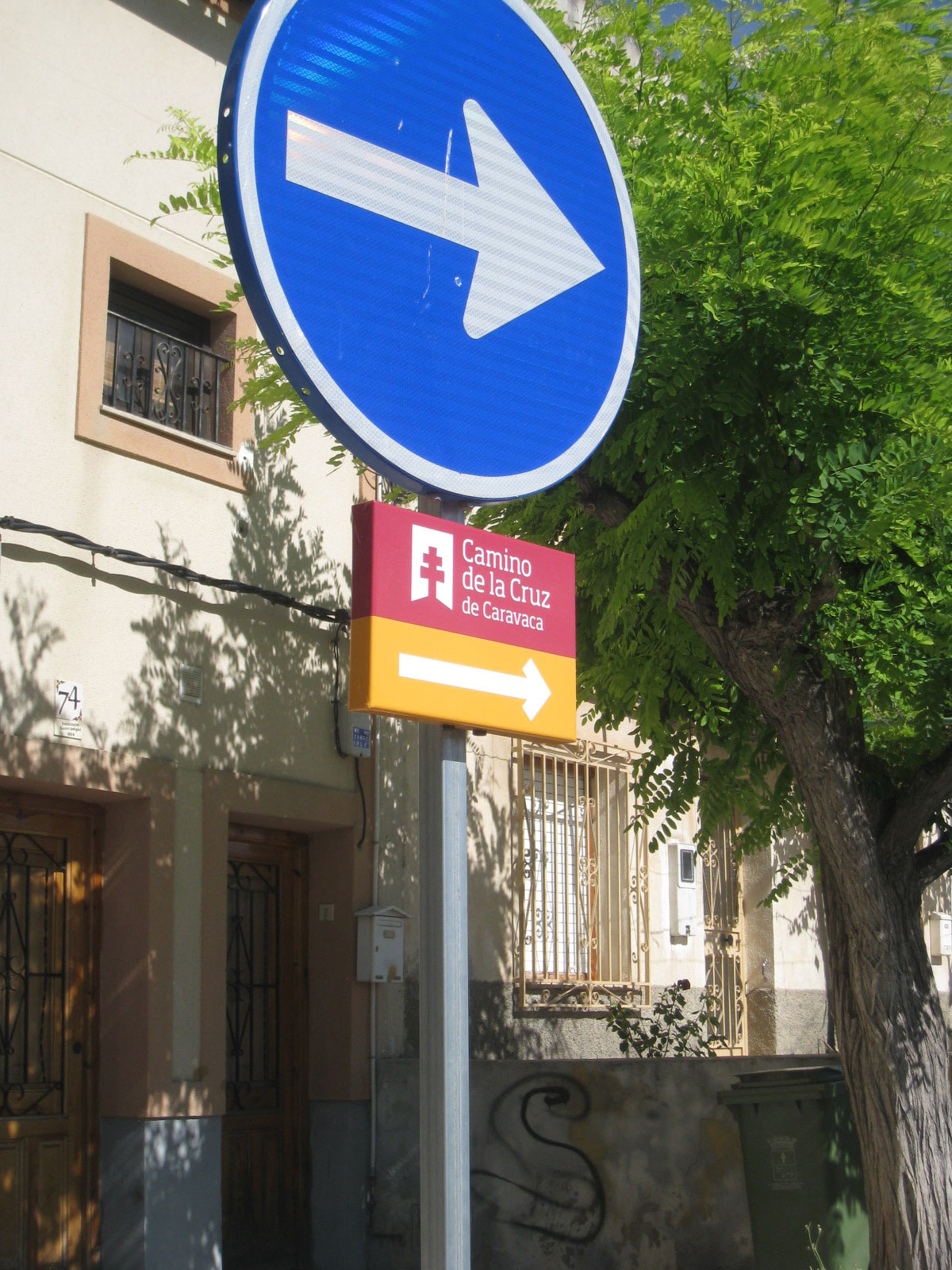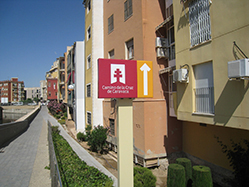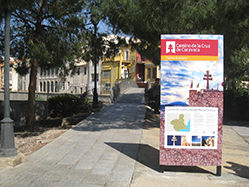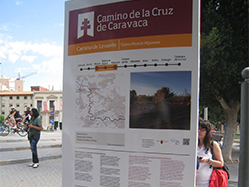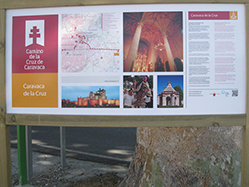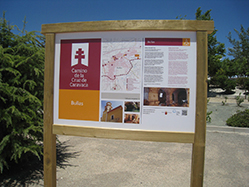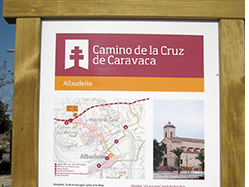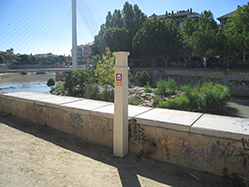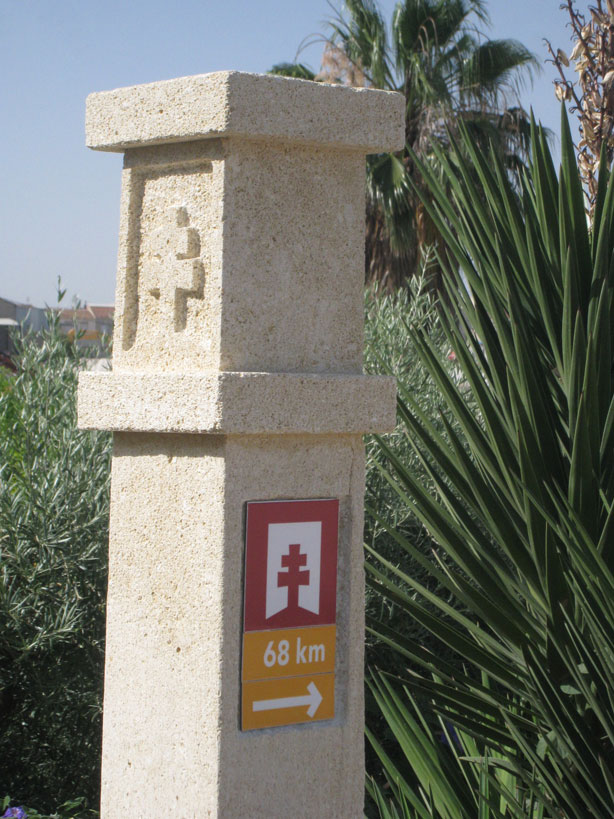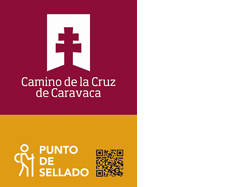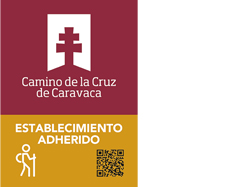All along the Camino de Levante there is plenty of signposting to make sure that the route is always visible, with different kinds of signage offering both orientation and other information. The Camino also follows stretches of the Vía Verde and "Gran Recorrido" (GR) paths, and pilgrims will therefore also find other signs and markers belonging to these routes.
Of course it is always possible that some of the signposts along the Camino may deteriorate or even disappear as they are subjected to adverse weather conditions, vandalism and accidents, and for this reason it is advisable to download the tracks of the route on the GPS, for example on your mobile phone or tablet. These are available in KML and GPX, and another option is to print off a copy.
The urban detours in various towns can also be downloaded, providing the option of leaving the Camino and paying a visit to other places of interest in each locality. These options are normally highlighted on the signposts of the town centre as well.
Remember that throughout the Camino further information can be accessed via the QR codes which appear on information boards along each stage and in the towns and other places of interest.
Should you encounter any problem with the signposting along the Camino, it can be reported by clicking here.
DIRECTIONAL ARROWS
These are red with white lettering, and show the route to follow. There are three types:
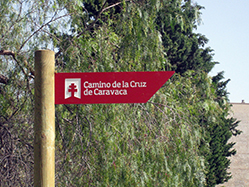
A post with an arrow in a rural area in which the logo and name of the Camino can be seen.
Ver foto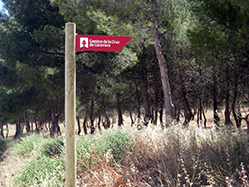
A post with an arrow in a rural area in which the logo and name of the Camino can be seen.
Ver foto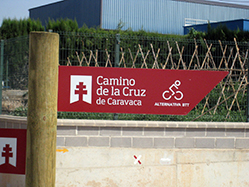
A similar post to the previous one with an arrow to indicate an alternative for mountain biking
Ver foto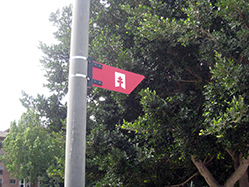
A small arrow, showing only the logo, positioned on street lights on built-up stretches of the route
Ver foto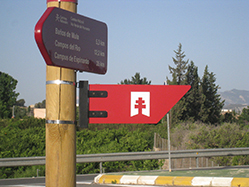
A small arrow, showing only the logo, positioned on street lights on built-up stretches of the route
Ver fotoEXIT ARROWS
These signs provide directions to a point of interest close to the Camino route or the start of an alternative route. They are white arrows with black lettering, and fall into two categories:
MARKERS
These are short wooden posts featuring the logo, and are used to confirm that you are still on the Camino in rural areas.
There are two kinds:
PAINTED MARKINGS
These are normally used in rural areas, and are present on fixed objects such as walls and rocks. They indicate straight on, a change in direction or a direction not to follow.
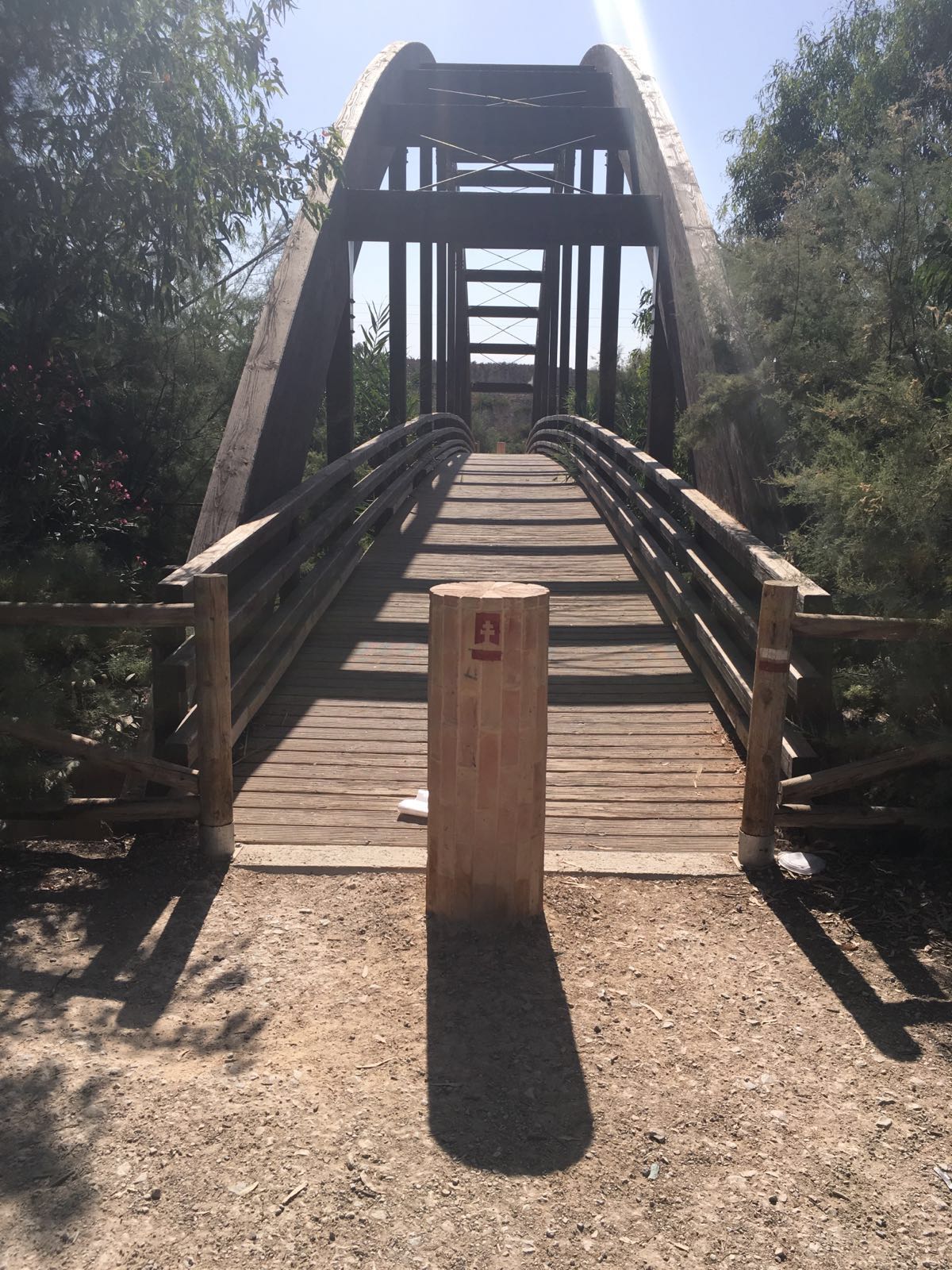
Painted indicator showing the route of the Camino de Levante
Ver fotoMETAL PLATES AND VINYL STICKERS
These are placed on other items such as sign posts to ensure that the continuation of the Camino is marked, and are of various types, depending on their location:
PLAQUES
These metal plaques featuring the logo and an arrow indicating the direction to follow.
They are of two kinds:
INFORMATIVE TOTEMS
These are located at the start of the Camino de Levante in Orihuela and in the city of Murcia, and each has two panels, one in Spanish and the other in English.
STAGE BOARDS
These are located at the start of each stage where there is no informative totem, and also in intermediate localities where pilgrims can join the Camino.
The boards include a map of the stage, details of its length and estimated duration and other information in Spanish and English about the towns and other places featured along the route.
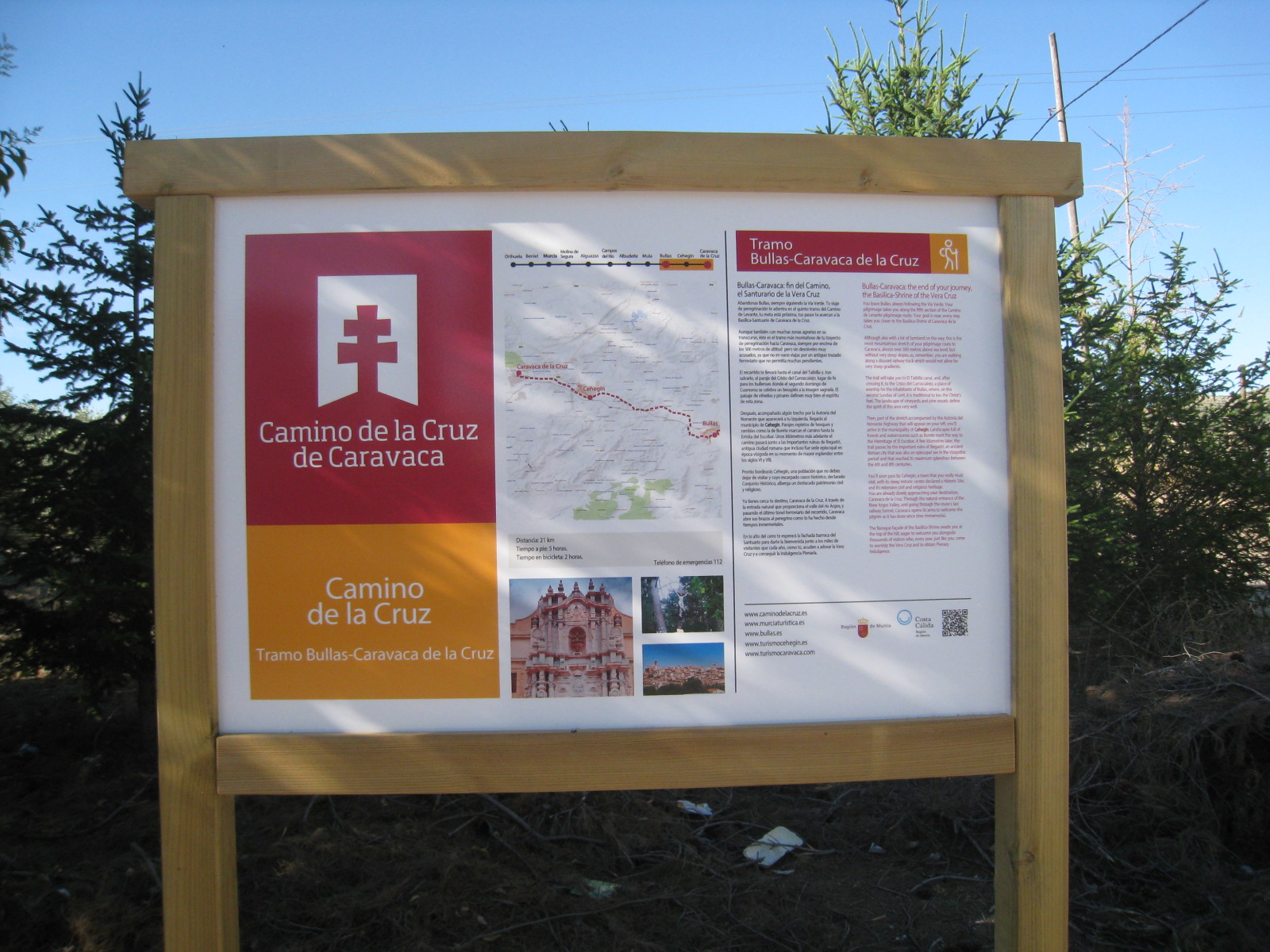
Section or stage information board on the Camino de Levante
Ver fotoTOWN INFORMATION BOARDS
These are located at the entrance into towns along the Camino de Levante, providing information about each town and points of interest within it and a map. The boards vary in size, depending on the size of the town and the tourist attractions it contains.
EXIT MILESTONES
These stone markers are placed on the way out of each town , and show the distance remaining to the end of the Camino de Levante at the Basílica-Santuario de la Vera Cruz de Caravaca
INTERPRETATION BOARDS
The vast majority of the tourist attractions on the Camino de Levante are already adequately marked and highlighted by the Town Halls along the route, but in some instances extra boards bearing the logo of the Camino de la Cruz provide additional information regarding points of interest in rural locations.
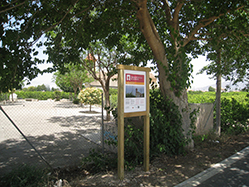
Interpretation board. Signposting. Camnino de Levate
Ver fotoWARNING SIGNS
These signs warn of potential dangers to walkers or cyclists, such as junctions with roads or a stretch of the Camino which is shared with motor vehicles.
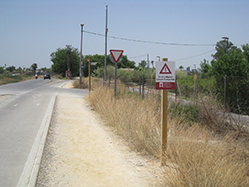
Warning Sign. Singposting. Camino de Levante
Ver fotoBADGES IN ESTABLISHMENTS
These are located on the door or the façade of establishments associated with the Camino, and fall into two categories:
